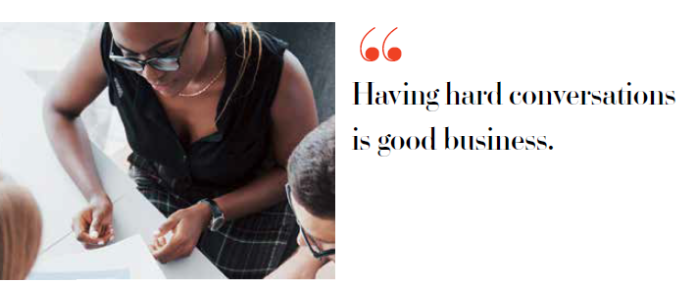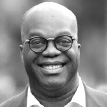The numbers don’t lie: racial equity initiatives & hiring practices are crucial for developing longevity and profitability.
DID YOU KNOW that black buying power within the United States has now reached $1.5 trillion? By 2024, that number is going to grow to $1.8 trillion—a number that is larger than the GDP for Mexico.
Did you know that the Hispanic buying power for Hispanic Americans is $1.4 trillion, or roughly the GDP for Australia?
Did you know that the buying power for Asian Americans is currently $1.2 trillion and expected to grow to $1.4 trillion in the next few years?
How much of this buying power are you leveraging every single day?
Statements Versus Standards
As you assess your team’s current state, consider a Washington Post article released this year entitled Corporate America’s $50 Billion Promise. When you look at the breakdown of how this $50 billion was allocated, only $71 million went to organizations focused on criminal justice reform.
I mention that because the bigger question is, why are we here again? It’s not to say Corporate America didn’t step up, but there’s a difference between pressure and practice. You cannot pledge your way out of systemic racism. While the companies in this pledge made a statement, it was not a standard.
Everyone wants a seat at the table. When you invite people to the table, you aren’t just offering equality, you’re offering racial equity. This is about giving a hand up, not just a handout—which, it turns out, is not only the right thing to do, it’s good business.
A Trillion-Dollar Opportunity
So, who is currently incorporating effective racial equity initiatives into their business strategy? Let’s look at some examples.
- Salesforce decided they would create ventures that will invest $100 million in marginalized communities to help those businesses level-up and have a seat at the table. Salesforce has also gone on record to say that by 2023, they will increase their leadership ranks by 50 percent as it relates to people of color being directors and vice presidents in their organization. They are intentionally impacting communities that have been marginalized and disenfranchised.
- McDonald’s announced they will not only continue to invest $1 billion in black suppliers, but also that they understand it is not enough to have two board members who are black and two women on their board. Over the next few years, they have plans to increase diversity within their executive ranks by 25 percent.
- Nike’s CEO has gone on record saying that Nike would not be the company it is today if it had not had the support of black Americans and the black population around the world.
Who is at the table making decisions for your company?
The McKinsey Global Institute’s research is saying that in the United States, there is a linear relationship between racial and ethnic diversity and better performance. For every 10 percent increase in racial and ethnic diversity on the senior executive team, McKinsey says earnings before interest and taxes rise 0.8 percent. And in their study of 1,000 organizations in 12 countries, they found that organizations in the top 25 percent when it comes to gender diversity among the executive leadership teams were more likely to outperform on profitability and value creation.
And think about this particular piece of data: The Center for Talent Innovation says teams are 158 percent more likely to understand target consumers when they have at least one member who represents their target’s gender, race, age, sexual orientation or culture.
When you consider those numbers, where does your organization sit right now?
Do you have individuals who have their finger on the pulse of trillions of dollars of buying power?

Racial Equity Role Models
In October 2019, T-Mobile said they didn’t want to just throw dollars at the problem, but rather think long-term how they could grow together and solve racial injustice once and for all. They set aside $25 million and created a memorandum of understanding with organizations like the National Urban League, the National Action Network and the League of United Latin Americans to really look at how they think about talent, culture and brand.
Netflix has invested $100 million in disenfranchised communities and, understanding that it’s not just enough to write a check, they specifically look at putting money into financial institutions in black communities. Dr. Stacy Smith with the University of Southern California Annenberg Inclusion Initiative says, “When you have diversity and inclusion behind the camera, you will have diversity and inclusion in front of the camera.”
I had the opportunity to speak with the team at General Mills this year. The company is headquartered in Minnesota, which has one of the lowest ranked education systems for black Americans in the country. In Minneapolis, the incarceration rate of blacks is 11 times higher than whites and, according to NPR, while 84 percent of whites in Minneapolis own their home, less than 25 percent of blacks do.
In response to these statistics, General Mills looked at whole equity and representation and made the choice to double the representation of black managers, increase minority representation to 25 percent, and double its spending with minority-owned suppliers. Then it partnered with other local brands to create the Minnesota Business Coalition for Racial Equity which specifically focuses on workplace, policy, philanthropy and allyship, and outlines how the group will tackle education, housing, healthcare and internet access. All of these things help individuals level up.
This is the conversation. Equality, yes, but the goal must be equality plus equity.
Your Next Steps
What can you do?
First, it starts with a CEO’s commitment. The Corporate Leadership Council says emotional commitment is four times more important than rational commitment in driving discretionary effort. When the CEO is committed to the goal, the conversation flips from “this is something we have to do” to “this is something we want to do.” That emotional commitment lets the entire organization know this is important.
As leaders consider how to approach these important strategic decisions, the website CEOAction.com can be a powerful resource, providing examples of what 2,000 CEOs from 85 different industries are doing every single day to think about racial equity through a fresh lens.
From there, establish an executive champion who will own the mission and ensure that racial equity does not get pushed to the back burner while also providing accountability for implementation. This champion will keep the organization focused on how talent is attracted, activated and advanced; which policies impact the people you serve; how much purchasing power is spent with diverse businesses who need a seat at the table; and the measurable net impact of your philanthropic initiatives.
People, policy, purchasing power and philanthropy—that’s how we begin addressing racial equity.
Your Bottom Line Is at Stake
Having hard conversations is good business. If we really want to understand how we can make a great impact and take a long-term view of this trillion-dollar opportunity before us, we need to ask how we will lead differently.
McKinsey tells us that companies pay a penalty for a lack of diversity. Organizations in the bottom 25 percent for both gender and cultural diversity were 29 percent less likely to experience profitability above the industry average. Working to create racial equity isn’t just the right thing to do, it’s a proven strategy for developing longevity and success.
Where are you right now in your diversity, equity and inclusion journey?

Simon T. Bailey’s purpose is to spark listeners to lead countries, companies and communities differently. He goes beyond feel-good content to deliver practical strategies, based on 30 years of experience in the hospitality industry, including serving as sales director for Disney Institute, based at Walt Disney World Resort.
From the December 2021 issue of Direct Selling News magazine.


